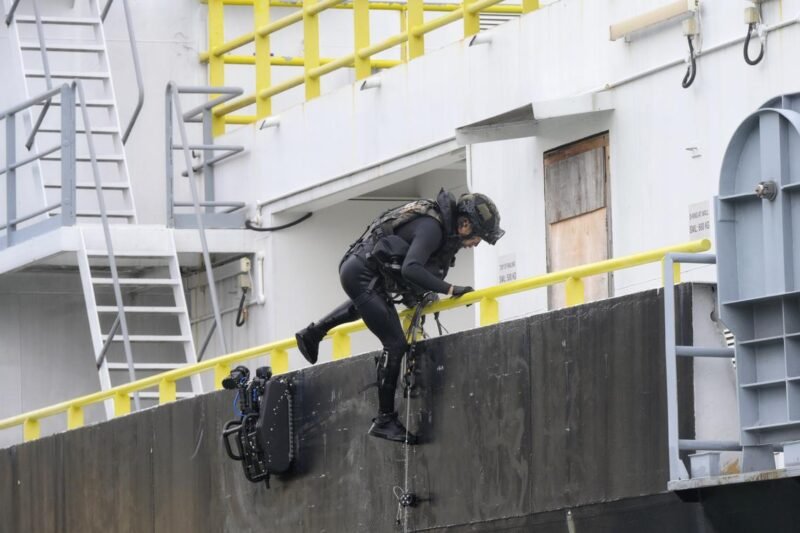The Singapore Police Coast Guard’s elite Special Task Squadron (STS) recently demonstrated their capabilities in a simulated rescue mission involving armed pirates. The STS members, equipped with advanced technology such as rebreathers and a rugged amphibious drone called Diodon, successfully rescued the ship’s captain who had been taken hostage by the pirates. The Diodon drone, with a range of about 4km, provided real-time aerial surveillance to enhance the STS tactical commanders’ situational awareness and decision-making process. This technology allows STS to carry out complex maritime special operations under challenging conditions with improved safety and success.
In addition to the Diodon drone, the STS also showcased a new specialized equipment called Spyder, a hull-climbing robot that aids in tactical ship boarding and covert insertion. Developed by the Home Team Science and Technology Agency’s Robotics, Automation and Unmanned Systems Centre of Expertise (HTX RAUS CoE), the Spyder uses magnetic tracks to “walk up” the side of the ship’s hull. This wireless-operated device improves operational safety by allowing operators to monitor the hook’s engagement and deployment in real-time, as well as provide close surveillance during covert ship boarding operations.
The combination of advanced technology like the Diodon drone and Spyder hull-climbing robot allows the STS to gain tactical advantages and enhance their capabilities in maritime law enforcement and security operations. Superintendent of Police Lee Ting Wei, PCG’s head of operations and security, emphasized the importance of leveraging technology and innovation to carry out successful maritime special operations. With these devices, the STS can effectively navigate and overcome challenges to ensure the safety and success of their missions.


















